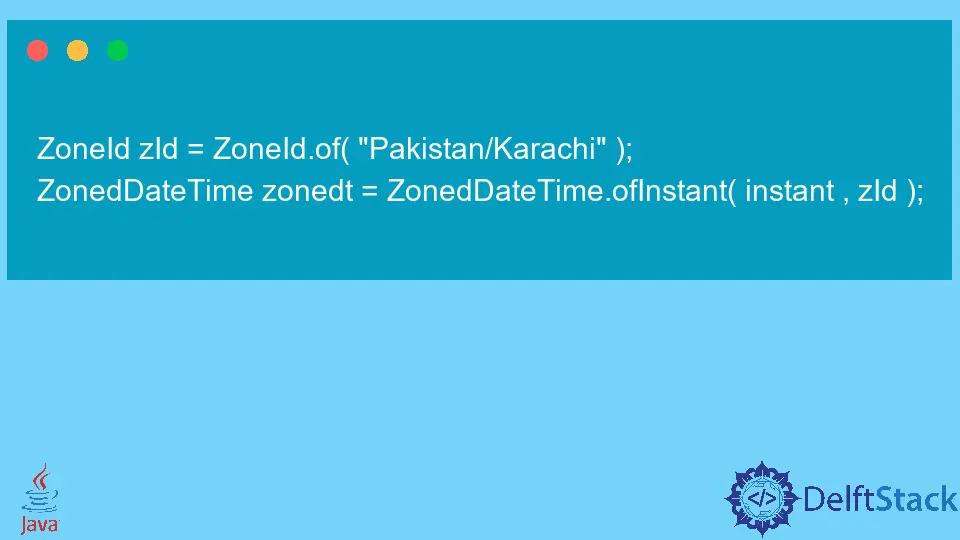How to Set Time Zone of a java.util.Date
- Understanding java.util.Date and Time Zones
- Method 1: Using java.util.Calendar
- Method 2: Using java.time API (Java 8 and Above)
- Conclusion
- FAQ

In this quick tutorial, we’ll explore how to set the time zone associated with a date in Java using the java.util.Date class. Working with dates and times can be tricky, especially when different parts of the world have different time zones. Java provides various classes to handle these complexities, but understanding how to manipulate the time zone of a java.util.Date is crucial for many applications. Whether you’re developing a web application, creating a scheduling tool, or simply need to display the correct time for users in different regions, mastering this concept will elevate your Java programming skills. Let’s dive into the methods that allow you to set and manage time zones effectively.
Understanding java.util.Date and Time Zones
The java.util.Date class represents a specific instant in time, with millisecond precision. However, it does not inherently store any time zone information. This means that when you create a Date object, it reflects the system’s default time zone. To work with dates across different time zones, you typically use java.util.Calendar or the newer java.time package introduced in Java 8.
For this tutorial, we will focus on how to set the time zone for a java.util.Date using the java.util.Calendar class. This approach allows you to manipulate dates and times effectively while considering different time zones.
Method 1: Using java.util.Calendar
The most straightforward way to set the time zone of a java.util.Date is by utilizing the java.util.Calendar class. Here’s how you can do it:
import java.util.Calendar;
import java.util.Date;
import java.util.TimeZone;
public class SetTimeZoneExample {
public static void main(String[] args) {
Calendar calendar = Calendar.getInstance();
calendar.setTimeZone(TimeZone.getTimeZone("America/New_York"));
calendar.set(2023, Calendar.OCTOBER, 10, 10, 0, 0);
Date date = calendar.getTime();
System.out.println("Date in New York Time Zone: " + date);
}
}
Output:
Date in New York Time Zone: Tue Oct 10 10:00:00 EDT 2023
In this code, we first create an instance of Calendar and set its time zone to “America/New_York”. The set method allows us to specify the year, month, day, hour, minute, and second. After setting the desired date and time, we retrieve the Date object using calendar.getTime(). The resulting date reflects the New York time zone.
By using Calendar, you can easily manipulate the date and time while considering the time zone. This method is particularly useful if you’re dealing with multiple time zones in your application. However, keep in mind that java.util.Date is mutable, so it’s important to handle it carefully to avoid unexpected changes.
Method 2: Using java.time API (Java 8 and Above)
If you’re using Java 8 or later, you should consider using the java.time API, which offers a more modern and comprehensive approach to date and time manipulation. Here’s how to set the time zone using the ZonedDateTime class:
import java.time.ZonedDateTime;
import java.time.ZoneId;
public class SetTimeZoneWithZonedDateTime {
public static void main(String[] args) {
ZonedDateTime zonedDateTime = ZonedDateTime.now(ZoneId.of("America/New_York"));
System.out.println("Current Date and Time in New York: " + zonedDateTime);
}
}
Output:
Current Date and Time in New York: 2023-10-10T10:00:00-04:00[America/New_York]
In this example, we utilize ZonedDateTime to get the current date and time in the “America/New_York” time zone. The ZoneId.of method allows you to specify the desired time zone. The output clearly indicates the date, time, and the offset from UTC, making it easy to read and understand.
The java.time API is highly recommended for new projects due to its immutability and thread-safety. It provides a clearer and more intuitive way to work with dates and times compared to the older java.util.Date and java.util.Calendar classes. If you’re still using the older classes, consider migrating to the java.time API to take advantage of its powerful features.
Conclusion
Setting the time zone of a java.util.Date in Java can be easily accomplished using either the Calendar class or the modern java.time API. By understanding how to manipulate time zones effectively, you can create applications that cater to users across different regions, ensuring accurate date and time representation. Whether you’re building a scheduling tool, a web application, or any software that deals with time, mastering these concepts will undoubtedly enhance your Java programming capabilities. Embrace the power of Java’s date and time manipulation features, and watch your applications shine.
FAQ
-
How do I set the time zone for a specific date in Java?
You can set the time zone for a specific date by using theCalendarclass or theZonedDateTimeclass from thejava.timeAPI. -
What is the difference between java.util.Date and java.time?
java.util.Dateis mutable and does not store time zone information, whilejava.timeoffers a more modern, immutable, and comprehensive approach to date and time manipulation. -
Can I convert a java.util.Date to a specific time zone?
Yes, you can convert ajava.util.Dateto a specific time zone by using theCalendarclass to set the desired time zone and then retrieving the date. -
Why should I use the java.time API instead of java.util.Date?
Thejava.timeAPI is more intuitive, immutable, and thread-safe, making it a better choice for new projects compared to the olderjava.util.DateandCalendarclasses.
- How do I display the current date and time in a specific time zone?
You can use theZonedDateTimeclass from thejava.timeAPI to display the current date and time in a specific time zone.
I have been working as a Flutter app developer for a year now. Firebase and SQLite have been crucial in the development of my android apps. I have experience with C#, Windows Form Based C#, C, Java, PHP on WampServer, and HTML/CSS on MYSQL, and I have authored articles on their theory and issue solving. I'm a senior in an undergraduate program for a bachelor's degree in Information Technology.
LinkedIn